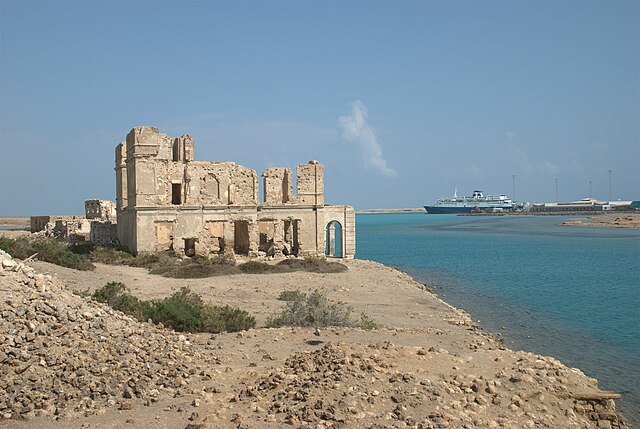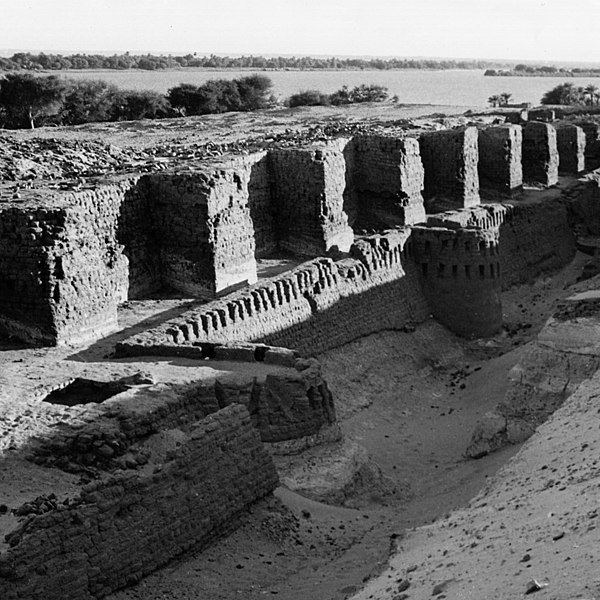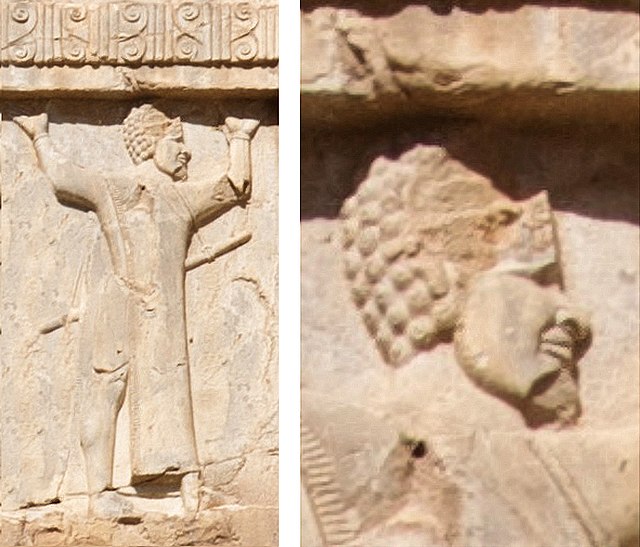Suakin or Sawakin is a port city in northeastern Sudan, on the west coast of the Red Sea. It was formerly the region's chief port, but is now secondary to Port Sudan, about 50 kilometres (30 mi) north.
Suakin, El-Geyf mosque
Building of Suakin in ruins
Suakin in 1928
Sudan, officially the Republic of the Sudan, is a country in Northeast Africa. It borders the Central African Republic to the southwest, Chad to the west, Egypt to the north, Eritrea to the northeast, Ethiopia to the southeast, Libya to the northwest, South Sudan to the south, and the Red Sea. It has a population of 45.7 million people as of 2022 and occupies 1,886,068 square kilometres, making it Africa's third-largest country by area and the third-largest by area in the Arab League. It was the largest country by area in Africa and the Arab League until the secession of South Sudan in 2011; since then both titles have been held by Algeria. Its capital and most populous city is Khartoum.
The large mud brick temple, known as the Western Deffufa, in the ancient city of Kerma
Fortress of Buhen, of the Middle Kingdom, reconstructed under the New Kingdom (about 1200 BC)
Nubian pyramids in Meroë
Kušiya soldier of the Achaemenid army, c. 480 BCE. Xerxes I tomb relief.







